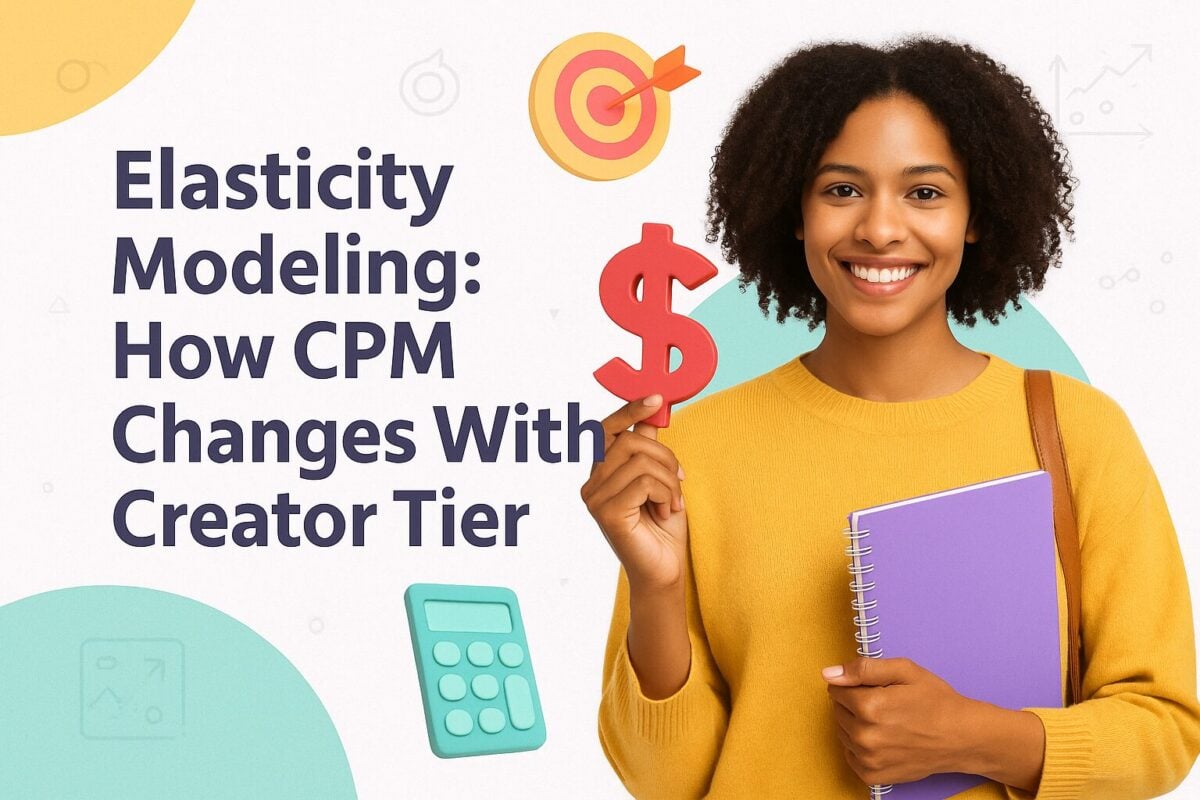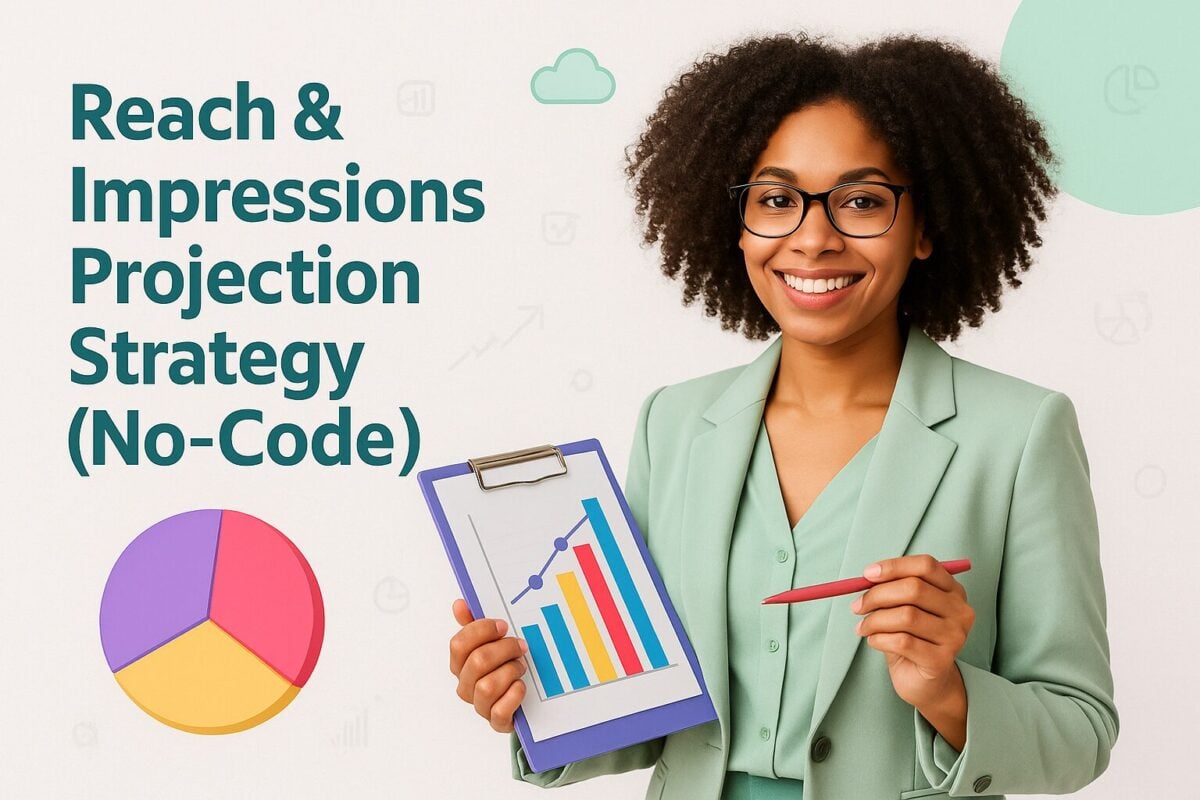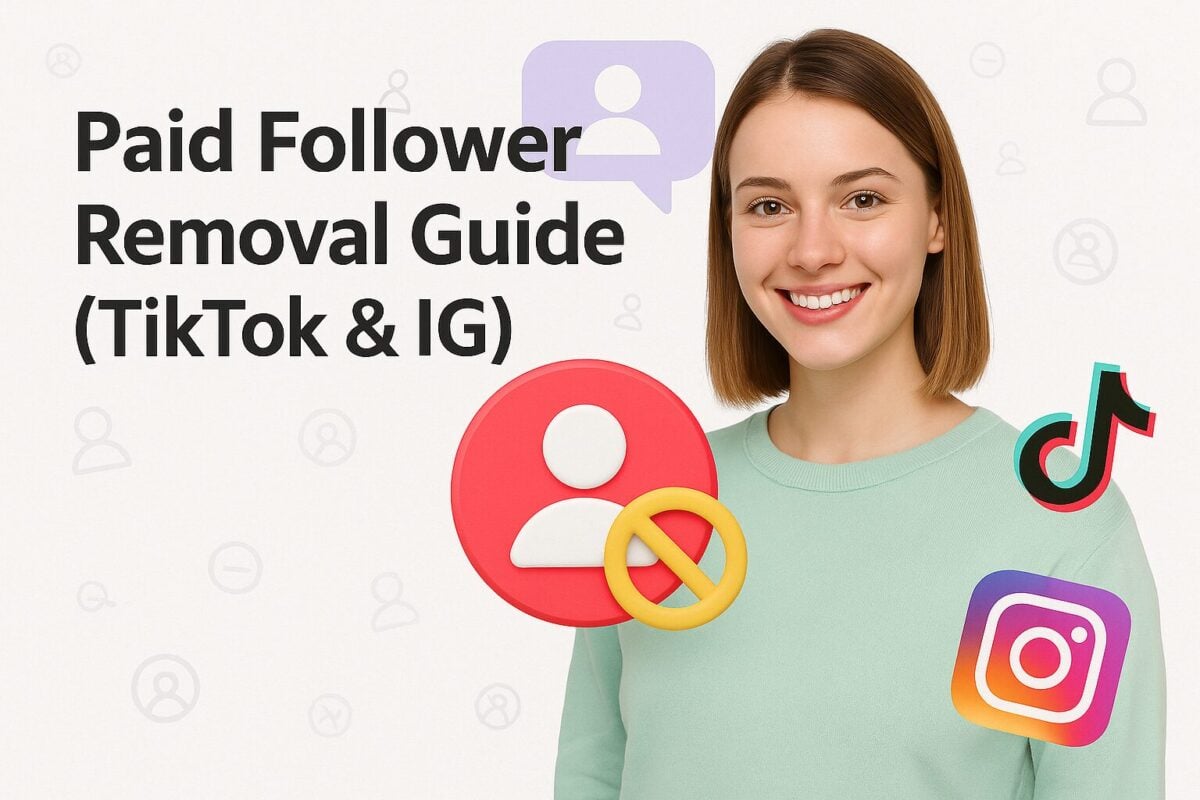The term "influencer" has become quite ubiquitous in the online space, especially in social media marketing. What was previously being done by celebrities is now taken over by regular people with large followings on social media platforms. These individuals are called influencers, and they've founded a new branch of marketing: influencer marketing.
According to our Influencer Marketing Benchmark Report, the influencer marketing industry will be valued at $24 billion by the end of 2024. Why? Because 85% of our survey respondents believe in the effectiveness of influencer marketing.
It's important to understand that influencers are not merely marketing tools but rather social relationship assets with which brands can collaborate to achieve their marketing objectives. Let's discuss their role, types, benefits, and selection in detail.
- What Is an Influencer?
- What Are Social Media Influencers?
- What Do Influencers Do?
- What Are the Types of Influencers?
- What Is the Role of Influencers in Marketing?
- How to Approach an Influencer?
- Which Skills Are Required to Become an Influencer?
- How to Become an Influencer?
- How Much Do Influencers Earn?
- Influencer Economy for the Win
- Frequently Asked Questions
What Is an Influencer?
An influencer is someone who has the power to affect the purchasing decisions of others because of his or her authority, knowledge, position, or relationship with his or her audience. Influencers are usually active on social media platforms like Facebook, YouTube, X, TikTok, and Instagram.
Typically, each influencer is known for a specific niche—be it fashion, travel, gaming, beauty, cooking, fitness, or any other interest area. They create content around their niche, and people who follow them are interested in that particular topic.
According to Justin Welsh, a successful entrepreneur,
"An influencer is an individual who has the power to affect the purchasing decisions of others because of their authority, knowledge, position, or relationship with their audience."
For example, James Charles is a beauty influencer with a significant following on TikTok, Instagram, and YouTube. He makes content around makeup hacks, beauty tips, makeup tutorials, and product reviews. People who follow him are interested in beauty and makeup, and they trust his recommendations for products or brands.
@jamescharles this one’s gonna be a no from me I’m sorry ? #makeuphack ♬ original sound - James Charles
What Are Social Media Influencers?
Social media influencers are individuals who have built a social media following due to their knowledge, expertise, or interest in a specific topic. Think gaming influencers who built a following after regularly posting game walk-through content or new video game reviews. Unlike celebrities, they built their influence solely from being present on social media and creating content on their preferred topic.
They regularly post about that topic on their preferred social media channels and generate large followers of enthusiastic, engaged people who pay close attention to their views. Brands love social media influencers because they can create trends and encourage their followers to buy products they promote.
For instance, Rifah (@mynameifrifah) is a makeup artist and social media influencer. She mostly creates skincare and beauty content, which has helped her build a huge following and influence in this space. She has amassed over 271k followers on TikTok and 56k followers on Instagram.
What Do Influencers Do?
Influencers do just what their name suggests; they influence people. They do so by creating content for brands, running branded giveaways, attending events, sharing personal experiences, or building a community for brands. Influencers also create a positive brand reputation online by advocating for a product or service and recommending it to their followers.
For example, Isabelle Graff, a beauty influencer, worked with Pixi Beauty to promote their products. She created a video showing a full face of makeup using only Pixi Beauty products and gave her honest reviews about them. Since she's a trusted micro-influencer, her followers are likely to buy the products she recommended.
Sometimes, influencers also encourage their followers to take action, such as buying a product or signing up for an event by sharing their discount codes. For example, Jesse James West is a Gym Shark influencer who shares his code with his followers, encouraging them to purchase Gym Shark products at a discounted rate.
What Are the Types of Influencers?
There are several types of influencers that you can separate based on a number of categories. Sometimes, people confuse the definition of an influencer because their understanding is only limited to one type of influencer. So it’s important to make a clear distinction between these types to better understand what an influencer is.
The most common methods of distinction are by following size, by types of content, and by level of influence. You can also group influencers by the niche in which they operate. This means that influencers who may appear in a low category by one measure may seem more influential when looked at in another way.
For example, many mega-influencers are also celebrities. Yet both these groups often have less real influence on their audience because they need more expertise in a dedicated narrow niche. Some micro and even nano-influencers can tremendously impact followers in their specialist niche. They may significantly benefit a brand that’s selling a product targeting that sector.
By Following Size
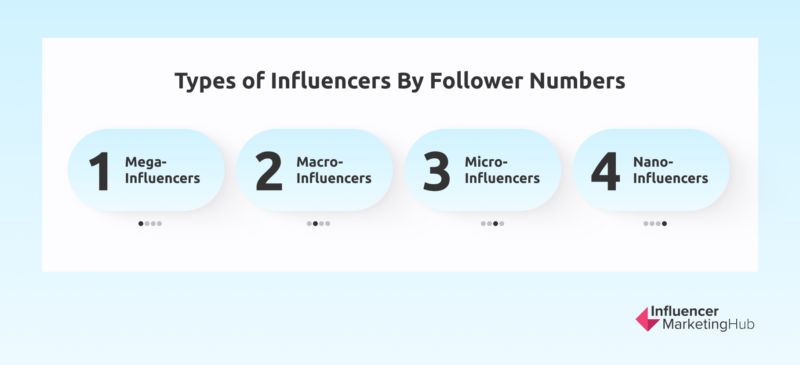
Types of influencers by follower count
In modern-day influencer marketing, it's not necessary to have hundreds of thousands of followers to be considered an influencer. Even individuals with less than 10k followers can be influencers. Here's how we can categorize influencers based on their follower count.
Category Follower Count Characteristics Engagement Rate Brands Who Work With Them Mega Influencers 1 million+ Celebrities or well-known public figures Low to medium Major global brands Macro Influencers 100,000 - 1 million Established influencers with a broad reach Medium Large brands Micro Influencers 10,000 - 100,000 Niche influencers with a strong connection to their audience High SMBs Nano Influencers 1,000 - 10,000 Everyday individuals with a personal and highly engaged audience Very high Small businesses or local brands
Mega Influencers
Follower Count: 1M+
Mega-influencers are individuals with at least a million followers on their social networks. Most of them are celebrities who have gained their fame offline, such as movie stars, sportspeople, musicians, and even reality television stars. However, some mega-influencers have gained their vast following through their online and social activities. Content creators such as PewDiePie and MrBeast are some examples of mega-influencers.
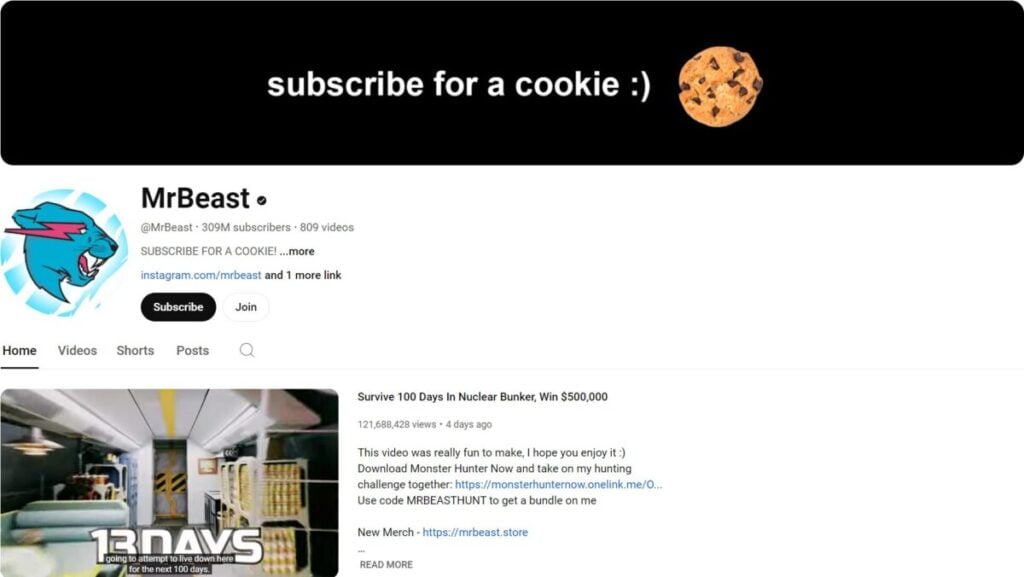
Due to their large following, mega-influencers give you the ability to reach millions of people instantly. As a result, working with them tends to get expensive. According to our report on Influencer Rates, you can expect to spend upwards of $10,000 per post when you partner with a mega-influencer. So, in most cases, they’re only viable for major brands with huge budgets.
Macro Influencers
Follower Count: 100k - 1M
Macro-influencers are individuals with between 100k and 1 million followers. While they still have a significant reach, they’re a bit more accessible than mega-influencers. Note that they’re still expensive to work with compared to smaller influencers. But you might be able to find ones that charge somewhere between $1,000 and $5,000 per post, depending on the platform.
This group tends to consist of two types of people. They are either B-grade celebrities, who haven't yet made it to the big time. Or they are successful online experts, who have built up more significant followings than the typical micro-influencers. The latter type of macro-influencer is likely to be more impactful for brands that want to launch an influencer marketing campaign.
For instance, It Cosmetics partnered with macro-influencers like Melodie Perez (@diaryoftroubledskin) to promote their CC+ Cream. The influencer has built a solid audience of 261k followers who mostly tune into her skincare and beauty content.
Macro-influencers generally have a high profile and can be excellent at raising awareness. There are more macro-influencers than mega-influencers, so it should be easier for a brand to find a macro-influencer willing to work with them. They are also more likely to be used to working with brands than micro-influencers, making communication easier.
However, you do need to be careful with this level of influencer. This is the category most likely to engage in influencer fraud – some have only reached their position thanks to the followers they have purchased.
Micro-Influencers
Follower Count: 10k - 100k
Micro-influencers have a smaller but more engaged following. Brands usually have a micro-influencer marketing strategy to reach niche audiences, such as pet owners or mommy bloggers. According to Sidney Pierucci, Founder of ESPLMedia, micro-influencers are ideal candidates for brand reach. She explains, "Because they are personally invested in their crafts, micro-influencers are trusted sources of recommendations for followers."
They are individuals with between 10,000 and 100,000 followers. They’re mostly emerging influencers and everyday people who have become known for their knowledge or interest in a specific niche. As a result, they have a sizeable following made up of people who share an interest in said niche.
At the same time, they’re still relatable to their followers, which results in a higher level of engagement. This makes them ideal for brands looking to partner with influencers in a given niche.
They’re also perfect for smaller businesses looking to execute influencer marketing on a budget, as they don’t charge as much as their more influential counterparts. According to our Influencer Rates report, you won’t have to spend more than $1,000 per post to work with most micro-influencers. In fact, they’ll typically charge around $100 to $500 per Instagram post.
In some cases, you can still find micro-influencers who will create content for free when you gift them products. Sana Jardin got the following TikTok video promoting their perfumes when they sent some samples to Elise Loves Smells, an influential perfume content creator with nearly 38k followers.
@eliselovessmells @Sana Jardin you are BEST. Gifted with no obligation to post, these are my honest and enthusiastic opinions! #sanajardin #sandalwood #sandalwoodtemple #perfumetok #carlosbenaim #nicheperfume #perfumetok #fragranceenthusiast #perfumeaddict ♬ Sweet Sunset - Tollan Kim & dulai
Nano-Influencers
Follower Count: Less than 10k
The newest influencer type to gain recognition is the nano-influencer. These people only have a small number of followers, but they tend to be experts in an obscure or highly specialized field. You can think of nano-influencers as being the proverbial big fish in a small pond.
Nano Influencers have between 1,000 and 10,000 followers. Regardless, these are keen and interested followers who are willing to engage with the nano-influencer and listen to their opinions.
While many brands would consider nano-influencers as inconsequential, they can be highly impactful for brands selling highly specialized and niche products. For instance, Rituel De Fille is a makeup brand that maintains a dark and magical aesthetic. Everything from their packaging design to their product names is intended to appeal to individuals who have an interest in both magic and makeup.
So partnering with a nano-influencer like @thehappyghoul_ was the perfect way to promote their Creature of Light Illuminating Serum. The makeup artist matches the brand’s persona, mostly creating content on dark aesthetic makeup. She has under 2k Instagram followers but most of them share the same interest, which means they’re likely to be interested in the makeup brands and products she promotes.

Alternatively, brands selling non-niche products can still leverage nano-influencers for product seeding campaigns. Of course, this would require activating several nano-influencers to maximize reach and raise brand awareness.
By Content Type
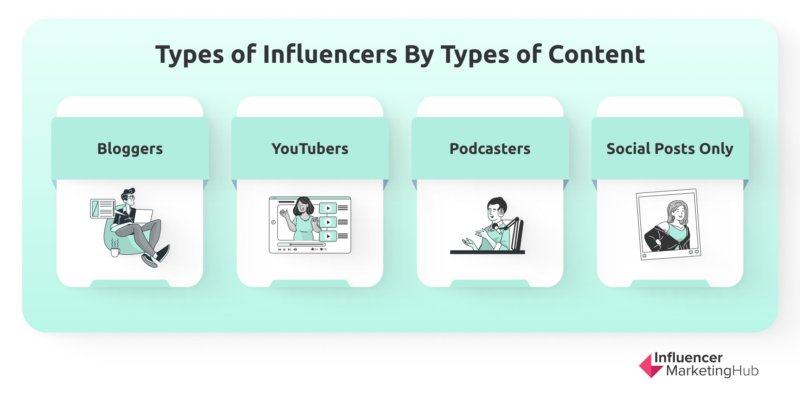
Types of influencers by content type
Influencers may also differ based on the type of content they make. Here are the standard categories.
Category Content Format Primary Platforms Audience Engagement Brand Use Case Bloggers Written articles WordPress and personal blogs Comments and shares Search engine marketing Podcasters Audio episodes Apple Podcasts, Spotify, Google Podcasts Listener downloads and social media interactions Audio marketing YouTubers Video content YouTube View views, comments, likes, and shares Video marketing Social Post Influencers Short-form videos or images Instagram, TikTok, Facebook, X Likes, comments, story views, shares Social media marketing and influencer marketing
Bloggers
The original modern-day influencers are bloggers who create long-form content on their own websites or blogs. They rose to prominence in the early 2000s, long before we had Instagram and Facebook, and YouTube hadn’t yet attained mainstream reach. These bloggers became influencers as they gained readership for blog posts sharing their personal experiences or providing valuable tips and instructions in their areas of expertise.
Eventually, major fashion houses started inviting fashion bloggers to shows while brands grasped for valuable ad space on prominent blogs. As video content and social media became more popular, blogging gradually returned to obscurity.
However, many prominent bloggers still have a significant readership, making them ideal partners for brands that want to focus on in-depth and long-form content. They also make for excellent partners in your affiliate program as they drive clicks and purchases directly from their blogs.
For instance, Nomadic Matt is a highly popular blogger creating content about all things travel. He created the following blog post on travel backpacks and listed links to buy each product featured in the post. When readers make a purchase through the links he shares, he earns a commission.
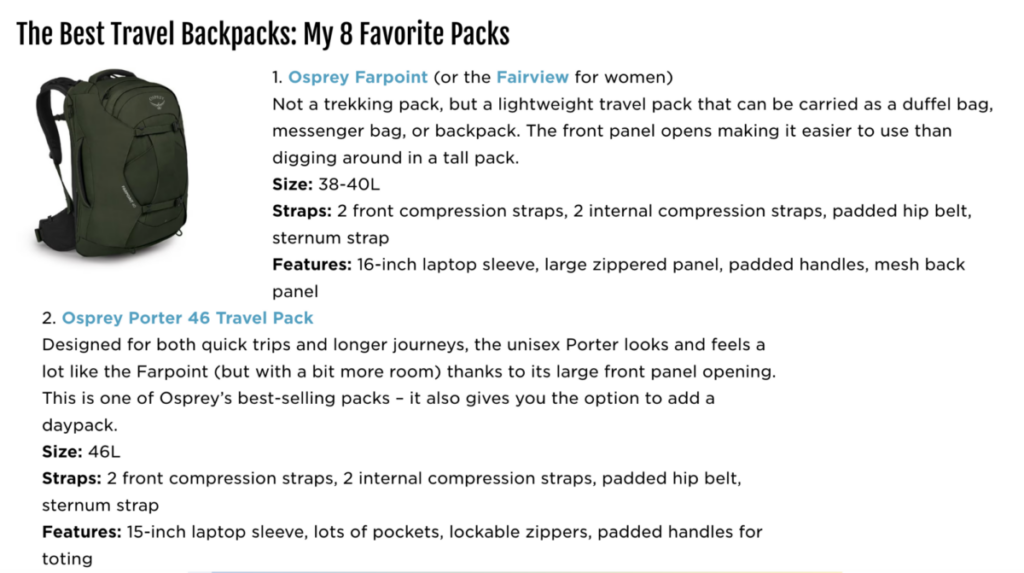
YouTubers
These are influencers who primarily create video content using YouTube as a platform. The style of video may vary depending on the influencer and the niche they specialize in. So you may have a travel influencer creating travel vlogs, a gaming influencer sharing game walk-throughs, a comedy influencer putting together a skit, a beauty influencer sharing makeup tutorials, and so on.
YouTubers build their influence by sharing their expertise and taking a unique approach to tackling a topic. For instance, makeup influencer Bailey Sarian has gained over 7 million subscribers on YouTube by discussing true crime, mysteries, and dark history while she does her makeup.
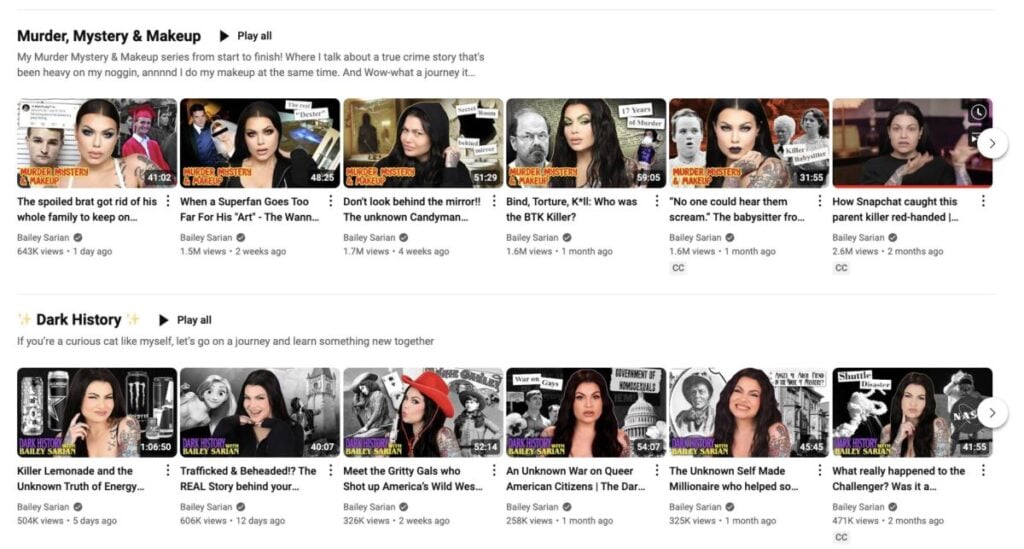
With YouTube offering a platform for longer videos, they’re perfect for sharing in-depth reviews, discussions, and demos. This makes them ideal for brands that want to reach audiences in the consideration stage, where they’re learning more about the product before they decide to make a purchase.
Podcasters
As podcasting has gained popularity in recent years, it has also given rise to podcasters. These are influencers who primarily create audio-focused content where they talk (literally) about specific topics in their chosen niche. Their content may involve a solo speaker, an interview-style discussion, or a panel of people participating in a conversation.
While most podcasts lack a visual element, they draw in a highly engaged group of listeners who tune in to hear what they have to say. In fact, there are 460 million podcast listeners globally, according to the latest podcast statistics. Moreover, 62% of U.S. consumers listen to podcasts.
This makes podcasting influencers an excellent option for brands that want to raise awareness about their products or services. Brands like Athletic Greens, LMNT, and Momentous have sponsored episodes on Huberman Lab, a podcast by Andrew Huberman.
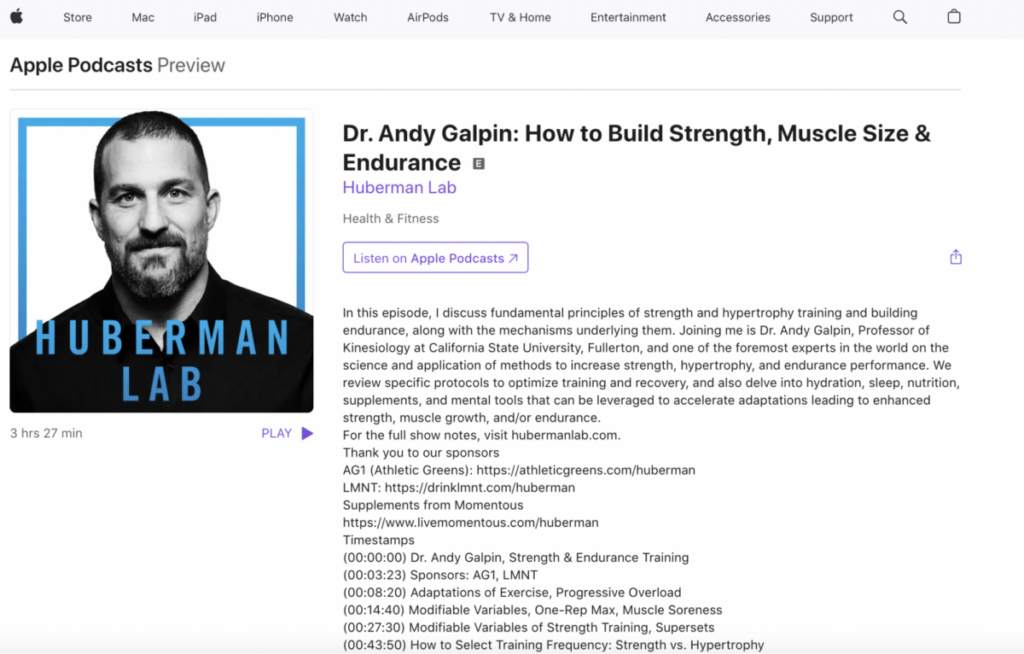
You could also co-create content with relevant podcasters to get your brand in front of the right audience. Think interviews and panel discussions or even creative podcast series that will help you appeal to the podcaster’s existing listener base.
Social Posts Only
Finally, you can also find social media influencers who create content exclusively on social media platforms like Instagram, TikTok, LinkedIn, X (formerly Twitter), and Facebook. Many of the previous types of influencers also maintain a presence on these major social platforms to cross-promote their content. The key difference with influencers who create social posts only is that they focus exclusively on the main social media platforms.
While they may maintain a presence across several platforms at a time, they don’t go beyond these main social media platforms. That means they don’t create blog posts, YouTube videos, or podcasts.
For instance, you’ll find an influencer who built a following exclusively from creating TikTok videos. Or one who grew their influence from regularly creating Instagram content and then branched out to use TikTok.
Keith Lee is a TikTok creator who primarily creates food-related TikTok videos. He’s the creator behind the viral Chipotle hack, which resulted in the food chain adding a new temporary item to their menu. He has garnered over 16 million followers on TikTok and 2.2 million followers on Instagram, where he maintains a secondary presence.

By Influence Level
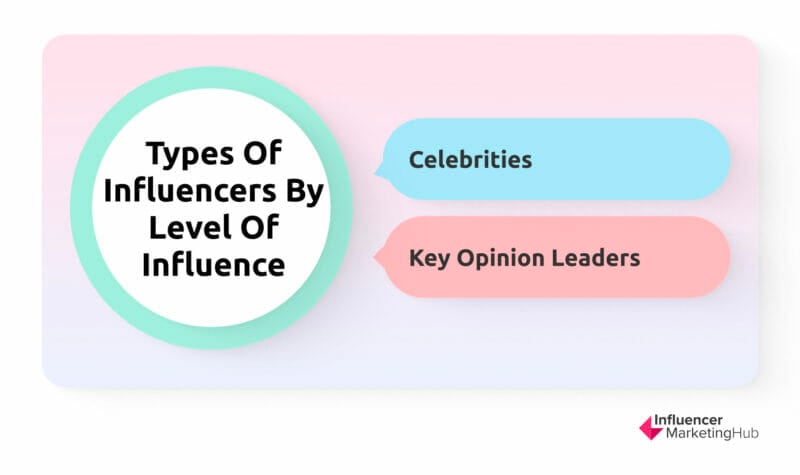
Types of influencers by influence level
Some influencers have more influence than others, and it's not always dependent on follower count. These people already have a great reputation in their niche, which helps multiply their influence. There are two types of influencers based on influence level.
Category Primary Influencer Area Follower Engagement Credibility Basis Platforms Content Type Celebrities Lifestyle, entertainment, broad appeal High visibility but usually low engagement per post Fame Social media Endorsements and personal life updates Opinion Leaders Niche markets and specific industries High engagement due to the trust factor Knowledge and expertise LinkedIn, webinars, and blogs Educational content and industry updates
Celebrities
As the original influencers, celebrities still play a key role in the influencer marketing landscape today. These are individuals who have achieved mainstream fame through their achievements in music, sports, acting, and fashion among others. Since they maintain a presence on key social networks, they’ve managed to amass a significant following across these channels.
Example: Bella Hadid is a model with over 61 million followers on Instagram.
Although brands have somewhat moved on from traditional endorsements, they’re finding new ways to partner with celebrities in alignment with the current trends. This involves creative partnerships where celebrities get involved in product design and development. It also involves product placements, reviews, unboxing videos, and more.
One creative partnership involves Nike inviting famous athlete, Shelly-Ann Fraser-Pryce for a tour of their “Air Immersion” exhibit. The collaboration served as a promo for the #NikeOnAir event in Paris, with the tour video getting an impressive audience reception.
The key to making this type of partnership work is the choice of celebrities, as many celebrities may need more credibility with the target audience. For instance, Justin Bieber may be highly influential if he recommended a fashion brand but would have little chance of influencing the buying patterns of those looking for a retirement village.
Celebrities may have many fans and gigantic social media followings. However, it is debatable exactly how much real influence they hold over those who follow them. That’s why it’s important to find the right alignment based on the product or service you want to promote and the audience you want to reach.
Opinion Leaders or Industry Experts
What if Bill Gates told you which computer brand to buy or Warren Buffet suggested a stock to invest in? The opinions of these influencers hold significant weight regardless of their social media follower count. They're usually very selective about their partnerships but can build immense trust for a brand.
These are industry experts and thought leaders such as journalists can also be considered influencers in their respective industries. These key opinion leaders have gained respect because of their qualifications, position, or experience in their topic of expertise.
These experts include:
- Journalists
- Academics
- Industry experts
- Writers
- Consultants and professional advisors
If you can gain the attention of a journalist in a national newspaper, who in turn talks positively about your company in an article, then you’re leveraging their influence in much the same way as you would a blogger or a social media influencer. There is a bonus in this situation in that the journalist will most probably write the report for free.
One thing to be aware of when working with key opinion leaders is that many have built up their reputation in an offline setting and may not have a large or active social following. This doesn’t necessarily mean that they’re not the right fit. In fact, their recommendations may have more credibility within their industry, meaning that you can instantly gain trust and boost brand awareness.
Example: Dan Fletcher, CFO of Planful, is a SaaS and finance thought leader.
People with Above Average Influence on Their Audience
In many ways, the best influencers have built their reputation online for being experts in some particular niche. They are similar to key opinion leaders but usually have gained their reputation more informally through their online activity. And they have created that reputation through the quality of the social posts they make, the blog posts they write, the podcasts they speak, and the videos they create on their YouTube channels.
Although nobody has yet created a generic term for these people, the British agency, PMYB, has come up with their trade-marked name - Chromo-Influencers. These are the agency's highest-performing influencers, based on 46 crucial factors that impact consumer behavior.
These influencers have the best communication skills and engagement with their audience. They have enticed their followers and become recognized as experts in their field.
Their follower numbers very much depend on their subject of expertise. However, you will find that these people have incredibly high followings in comparison to others in their niche.
What Is the Role of Influencers in Marketing?
Influencers have an important role to play in marketing today. Todd Cameron, a marketing executive, explains their role perfectly by saying,
"Influencer marketing is the first real consumer-driven marketing channel. It's real people talking to real people."
Here's how that helps brands.
Increase Brand Awareness
The most common way influencers help brands is by increasing their brand awareness. When an influencer recommends a product or promotes it, their followers are likely to check it. Tamara McCleary, CEO at Thulium, explains,
"A long-term influencer program will allow your brand to create true brand advocates, powerful brand evangelists, and raving fans."
An example of a brand that does this is Hello Fresh. The meal kit delivery company partners with influencers to let their followers know about their service and how it can benefit them.
@hellofresh #HelloFresh is here to save the day ?? @Ms Shi & Mr He ♬ original sound - HelloFresh US
Increase Revenue Generation
Influencers also drive sales for brands by promoting their products or services. Our guide on influencer marketing ROI explains this concept in detail.
Michael Kuzminov, Chief Growth Officer (CGO) at HypeFactory, also explains how influencers accomplish this,
"By leveraging the trust-building prowess of influencers, capitalizing on cost-effective strategies and embracing adaptability, businesses can tap into this dynamic approach to drive sales, engage audiences and forge lasting connections in an era of economic unpredictability."
For example, BenQ, a technology company, collaborated with over 30 influencers in partnership with the Influencer Marketing Factory to generate sales for its portable projector.

BenQ campaign influencers
Amplify Marketing and Product Launch Campaigns
According to Rand Fishkin, Founder of Moz,
"An influencer promoting and amplifying your message, your brand, to their audience means credibility. It means additional reach, and it means you get an outsized modifier to the conversion process."
Brands often work with influencers when launching new products to generate buzz. Similarly, influencers may help amplify marketing campaigns by creating and sharing branded content, including product reviews and giveaways.
Take Rhode Skin as an example. The brand works with beauty influencers to introduce its new products, such as blushes.
Reach Niche Audiences
Brands tend to work with micro and nano-influencers to reach niche audiences. For example, a macro beauty influencer will have generic beauty content that caters to a broad audience. However, if a brand creates products specifically for skin concerns like rosacea, they'll likely work with a smaller influencer who either has rosacea herself or has an engaged audience with similar concerns.
For example, Nigel Seeb is a nano-influencer who shares content around his passion for traveling and coffee. He is also vocal about LGBTQ+ rights and has collaborated with Lyft on their Pride Month campaign.
How to Approach an Influencer?
There are a few ways brands can find influencers.
- Influencer Platforms: An influencer platform is like a hub that connects brands with influencers. Brands can filter influencers based on content type, audience, follower count, location, and other factors. Check out our guide on influencer marketing for creators for more.
- Influencer Marketing Agencies: Brands may also reach out to influencer marketing agencies and let them handle the entire process, from finding the right influencer to managing the campaign.
- Social Media: Many brands follow specific hashtags and browse through social media platforms to discover potential influencers.
- LinkedIn: Brands looking for thought leaders and industry experts find them through LinkedIn.
Brands can approach influencers themselves or through intermediaries, such as a marketplace or agency. In most cases, a DM or email works. Some influencers have agents or managers, so brands can communicate with them instead.
What to Offer Influencers: Creating an Engaging and Appealing Offer for Influencers
What you offer an influencer depends on your budget and end goal. For example, as a small business, you may not have enough resources to pay an influencer thousands of dollars. So, you can send them your product or offer your service for free. Check out our guide on product seeding to learn more.
Here are some other options you can offer influencers:
- Commission-based Pay: You can negotiate a commission for every sale that comes in through the influencer's code. It's a win-win situation for both parties.
- Sponsored Content: Brands pay influencers to create and publish sponsored posts on their social media platforms. It could be a simple shoutout, product review, tutorial, or influencer takeover.
- Brand Ambassador: For brands that want to foster long-term relationships with influencers, they can offer them brand ambassadorship. These influencers then create content regularly as a part of the brand ambassador program.
- Exclusive Access: Some brands offer exclusive access to events or products for influencers as part of a collaboration. For example, Topicals, a skincare brand, took influencers on a trip to Bermuda. The influencers had to create content for the brand during the trip to feature their product in the picturesque tourist location.
Which Skills Are Required to Become an Influencer?
The good news is that you don't need any formal education to become an influencer. As for the skills, you can develop them over time. Here are the ones you'll need.
Content Creation Skills
This one's a no-brainer. Since you'll be creating content on a regular basis, you should be adept at it. Some skills in this regard include photography, videography, writing, editing, storytelling, and so on.
Pinterest and fellow influencers' profiles can offer quite a bit of inspiration. Additionally, you should be proficient in basic content creation tools like Capcut and Canva. Learn from YouTube tutorials and in-platform guides. Also, learn how to maximize your social media account's features and analytics.
Marketing and Communication Skills
Communication is obviously key in any type of marketing, including influencer marketing. Kamiu Lee, VP of Strategy at Bloglovin, says,
''Savvy influencers know to treat their following like their closest friends — and build trust with their audience. It is because of this relationship that influencer marketing, when executed correctly, works to affect purchasing behavior, particularly for the younger generations.''
Communication skills like public speaking and networking also come in handy. You should also hone your marketing skills, such as data analysis, SEO, branding, and social media marketing. For example, as a TikTok influencer, you should know how to set your aesthetic, measure content performance, plan campaigns, and engage with your followers.
Interpersonal Skills
Influencers have to work with two parties: brands and audiences. For the former, they need networking and negotiation skills to pitch their ideas and negotiate contracts. As for the latter, relationship-building is the way to go. For instance, you must respond to comments and DMs in the same tone as the rest of your content. Our social media community management guide will be of help to you.
Influencers also have to be team players. Often, brand collaborations include multi-influencer campaigns and trips. During these events, influencers have to work with their fellows towards a common objective.
How to Become an Influencer?
Some people are swept into the influencer life through virality. Khaby Lame, an influencer with over 163 million followers on TikTok and 81 million on Instagram is a good example. He used to make funny videos, which gained massive traction in Italy, and eventually, he built his brand from there.
However, for most people, it takes time and deliberate effort to become an influencer. Here's a step-by-step process on how to become an influencer.
Find a Niche
First step: choose a niche. It could be something you're good at or interested in. For example, if you're the designated chef at family gatherings because of your worthy-of-passing-down-generations recipes, cooking could be your niche.
Your niche can also be something you're passionate about, such as travel or fashion. It may be something you studied at college, like finance. For example, Humphrey Yang is a finance YouTuber because of his past expertise as a financial advisor.
Post Content
After selecting your niche, start posting content around it. For example, if your niche is gardening, start with basic planting and maintenance tips. You can also create a series on different gardening techniques or show your own garden transformation. Look for social media post ideas on other influencers' pages. Trending hashtags also hint at what people are interested in.
Another way to post content is through trends and challenges. Many TikTok influencers like Charli D'Amelio rose to fame through dance challenges. Similarly, on Instagram, there are trends like "What I eat in a day," where influencers share their meals and recipes.
For example, Karissa Dumbacher, a food influencer, created a video on what she ate in a day while working on a cruise. This type of content, even if not exactly niche-related, helps build a connection with your audience. Check out our Instagram post ideas for inspiration.
Helpful Tips
Here are some handy tips to make your content visible.
- Complete your profile bio so your audience knows what type of content to expect.
- Post consistently. Social media algorithms favor creators who post regularly.
- Be authentic, and show your personality rather than stealing someone else's content ideas.
- Add hashtags to your posts for higher visibility.
- Engage with your followers through comments, DMs, polls, and story replies.
Create a Strategy
Once you start getting followers and engagement, create a strategy for your account. For example, you can create an editorial calendar to plan your content in advance. We have a list of social media calendar tools that can help you with this.
Check your social media analytics to determine which type of content does the best. Plus, ask your audience what they want to see more of. If you need help, hire a freelance editor or social media manager to assist you.
Try to stay ahead of your posting schedule so that any unseen events do not affect your content flow. Schedule your content in advance using one of the free social media scheduling tools in our list.
Build a Community
Community building simply means not letting your followers feel like they exist in a vacuum. Instead, make them feel heard. If they ask something in the comment section, respond to them. Hop on live streams for real-time chatting or put up a Q&A session on your stories.
Steph Hui, a fashion influencer, does a good job of this. She responds to the top comments to keep the conversation going.
You can also work with other creators and collaborate on content together. It helps broaden your community since you get exposure to their followers, and they get exposed to yours.
Check out our selection of community building tools for inspiration.
Work With Brands
You've finally reached the fun part. After your profile has gotten decently active, you can reach out to brands yourself. Don't go on a blasting spree, though. Work with brands that your audience relates to and would be interested in.
Most brands, particularly startups, have a set budget for influencer marketing. The amount of it they plan to spend on you will depend on your reach and influence. Some common ways in which brands work with influencers are PR gifting, sponsored posts, guest posts, brand trips, giveaways, and product releases.
For example, Steph Hui is an Olaplex partner. She shares content about their products and how to use them in your hair care routine.
Similarly, she gets invited to brand events, too. For example, Oscar De La Renta invited her to their pre-spring 2025 show. They also dressed her up in their collection and styled her for the event.
She also gets PR gifts from brands like Maison Margiela Fragrances, which she posts about on Instagram and TikTok. The point is that there's more to working with brands than just sponsored posts. It's up to you to build yourself to that level.
How Much Do Influencers Earn?
How much an influencer earns depends on the following factors:
- Follower Count and Engagement: Influencers with more followers and higher engagement levels charge more per post than their smaller-account counterparts
- Project Type: One-time or smaller projects like sponsored posts or gifting will pay less than larger projects like brand partnerships or ambassador programs
- Niche: Influencers in certain niches, such as beauty or fashion, tend to earn more than those in other industries due to the high demand for collaborations in these areas
- Negotiation Skills: The ability to negotiate rates with brands can also impact an influencer's earnings.
- Brand Size: Smaller brands don't have the same budget as larger, established brands, so they may offer lower rates. Our Influencer Marketing Benchmark Report found that over 47% of brands spend under $10k on influencer marketing, while almost 21% spend anywhere from $10k to $50k.

How much brands spend on influencer marketing
- Product Type: Certain types of products, such as luxury or high-end brands, may also bring in higher payments for influencers.
Our detailed guide on how much creators make covers creator earnings by audience size, engagement, and industry. Alternatively, you can use our Instagram Money Calculator or TikTok Money Calculator to estimate your earnings.
Influencer Economy for the Win
Going forward, brands will spend more on influencer marketing, as over 59% of our survey respondents reported increasing their budgets. In such a landscape, influencers can command higher earnings. The influencer economy is constantly expanding, creating more opportunities for creators.
We've covered the basics of becoming an influencer and how much you can earn. Learning from the types of influencers we've mentioned, you can monetize your online presence even with a few thousand followers. We have covered the examples of quite a few influencers in this guide whose growth trajectory and content strategy you can emulate for your own success.
Frequently Asked Questions
What is an influencer in social media?
As we have established in this article, an influencer in social media is someone who has:
- the power to affect others' purchasing decisions because of their authority, knowledge, position, or relationship with their audience,
- a following in a distinct niche, with whom they actively engage. The size of the following depends on the popularity of their niche.
Influencers in social media have built a reputation for their knowledge and expertise on a specific topic.
What do social media influencers do?
Social media influencers create engaging content, connect with their audience, and partner with brands to shape opinions and drive trends. Specifically, they:
- Produce Content: Share photos, videos, stories, and blog posts that reflect their personal style and interests.
- Engage Followers: Interact with their audience through comments, live sessions, and direct messages, building trust and community.
- Collaborate with Brands: Partner with companies to promote products or services through sponsored posts, reviews, and affiliate marketing.
- Set Trends: Influence consumer behavior and popular culture by introducing new ideas, styles, or products.
In short, social media influencers use their platforms to inform, entertain, and influence their communities while driving brand awareness and consumer engagement.
How many followers do you need to be an influencer?
The number of followers you need to be an influencer very much depends on the niche in which you operate. Mega influencers have many followers on their social networks, often more than 1 million followers on a platform. People with followers in the range between 100,000 and 1 million followers on a social network are macro-influencers. Most influencers are micro-influencers with between 10,000 and 100,000 followers. In really specialist niches, you have nano-influencers with between 1,000 and 10,000 followers.
How does an influencer get paid?
This depends on the social platforms where the influencer operates. Some of the common ways influencers get paid are:
- Affiliate marketing
- Display advertising
- Sponsored posts / images / videos and brand campaigns
- Courses, subscriptions, and eBooks
- Photo and video sales
- Acting as brand representatives or ambassadors
- Payments to a Patreon account for exclusive content
- Co-created product lines
- Promoting their own merchandise
Influencers have both reach and influence on their audience. This makes an ideal situation for brands trying to reach a matching target audience.
Do influencers pay for followers?
While some people undoubtedly pay for followers online, genuine influencers don't have to. Indeed, you should treat any evidence of any more than a few fake followers as a tremendous red flag. Alright, many large celebrity accounts have their share of fake followers, created by bots without the celebrities knowing. They wouldn't have paid for these fake followers – the bots prowl on celebrity accounts to look credible. However, real influencers with more manageable follower numbers check that the bulk of their followers are genuine.
How to partner with influencers?
To partner with influencers, begin by identifying those whose audience and values align with your brand. Next, reach out with a personalized proposal that clearly outlines the mutual benefits, campaign goals, and expected deliverables. Once both parties agree on terms and compensation, work together to create authentic content that resonates with the influencer’s followers. Finally, track the campaign’s performance and make adjustments as needed to optimize future collaborations.
How do influencers get started?
Influencers get started by choosing a niche they're passionate about and consistently creating authentic, engaging content on platforms like Instagram, TikTok, or YouTube. They focus on building a personal brand and a community by sharing unique insights or creative content, interacting with their audience, and refining their style over time. As their following grows, they begin to attract opportunities for brand partnerships and monetization.
![Preview for What is an Influencer? – Social Media Influencers Defined [Updated 2024]](https://influencermarketinghub.com/imaginary/resize?width=414&type=webp&url=https://influencermarketinghub.com/wp-content/uploads/2017/03/What-is-an-Influencer.png)
